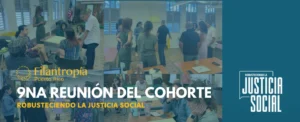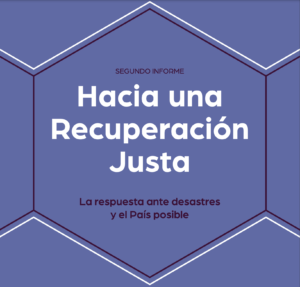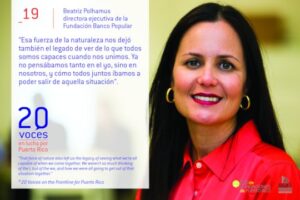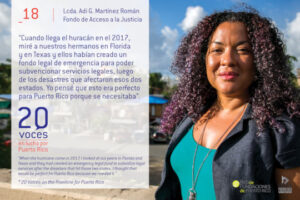FiPR News Segundo Brunch de Membresía de 2024...
Read MoreField Update: Museo de Arte de Puerto Rico
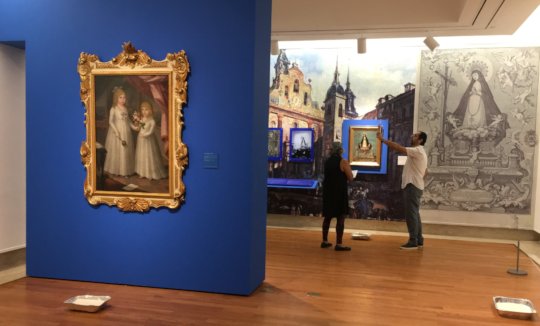

During the 51 days following Hurricane Maria, the Museum of Art of Puerto Rico (MAPR), located in Santurce, remained closed to the public. Meanwhile, on the inside the museum’s personnel worked tirelessly to safeguard the permanent collection. A generator kept the humidity levels and temperature of the museum stable protecting the artworks, some of which date back to the seventeenth century.
Days turned to weeks and the lack of electric power on the island became an ongoing issue. Interim director Marta Mabel Pérez was concerned that other museums and cultural institutions didn’t have access to the necessary environmental controls to preserve their collections. The work of important Puerto Rican artists including José Campeche, Rafael Trufiño, Carlos Osorio, Joaquín Reyes and Arnaldo Roches Rabell were at risk. In the MAPR they had the space available to house these pieces so they quickly reached out to the several institutions.
“After the hurricane passed, we were the museum that coordinated the initiative to safeguard Puerto Rico’s cultural heritage, specifically that of the visual arts which tells the story of Puerto Rican art,” Perez said.
They received over 200 artworks and cultural assets from the University of Puerto Rico, Río Piedras campus; Sagrado Corazón University; Santa Catalina Palace (La Fortaleza); Museum Casa Roig, Humacao; Caguas Museum of Art; and the Luis Muñoz Marín Foundation, turning the MAPR into a national vault. Sol Rivera, MAPR’s conservationist, and the registrar Sandra Cintrón, who developed the emergency plan for the institution, organized the museum’s team to receive, register, and store the pieces.
The FORWARD Fund, in conjunction with other emergency funds, allowed the Department of Education and the Exhibitions and Collections Department of the MAPR to continue working during the emergency period.
Starting in October, the MAPR joined forces with the staff of the Heritage Emergency National Task Force, co-sponsored by FEMA, to offer workshops and orientations on managing art collections and to channel emergency resources to more than 60 cultural professionals and over 30 cultural institutions, including the General Archive of Puerto Rico, the Puerto Rican Athenaeum, the Conservatory of Music of Puerto Rico, the Institute of Puerto Rican Culture, several libraries of the University of Puerto Rico, among others. In addition, the Smithsonian Institution sent six resources to Puerto Rico to train 25 museum directors on how to prepare an emergency plan, using the MAPR as its headquarters.
“Our goal is that by May these professionals who took the workshops will have become coaches and they will then in turn train more professionals. We’re creating a network so that the leaders of these cultural institutions are trained in emergency preparedness for the next hurricane season,” says Pérez.
In early November, the MAPR reopened for the public and received over 1,500 visitors that first weekend. By that time they were able to return the sheltered artworks to their original institutes.
After Hurricane Maria, the cultural sector closed ranks in order to protect the cultural and artistic legacy of the island. As a part of these efforts, they created the Coalition for the Heritage of Puerto Rico, composed of the Art Museum of Puerto Rico, the Luis Muñoz Marín Foundation and the Foundation for Architecture. The Coalition will assist the community of institutions or individuals that house art collections, as well as those buildings that are in the Registry of Historic Buildings of Puerto Rico, making educational tools and resources accessible for the conservation and preservation of Puerto Rican culture. Also, the Coalition will develop a system for effective communication between institutions and will serve as a link between other agencies.
“It’s an enormous job that needs to be done but we’re all together and we’re communicating. We’ve already learned the lesson of what can happen if we don’t prepare,” Pérez acknowledged.
Impact of the Forward Fund
FORWARD Puerto Rico Fund Impact of the FORWARD Fund Filantropía...
Read MoreReport: Towards a Just Recovery
Ayuda Legal Puerto Rico published the second report, which includes data,...
Read More20 Voices on the Frontline for Puerto Rico/ Voice 19: Beatriz Polhamus
20 Voices on the Frontline for Puerto Rico/ Voice 19:...
Read More20 Voices on the Frontline for Puerto Rico/ Voice 18: Adi Martínez Román
20 Voices on the Frontline for Puerto Rico/ Voice 18:...
Read More






